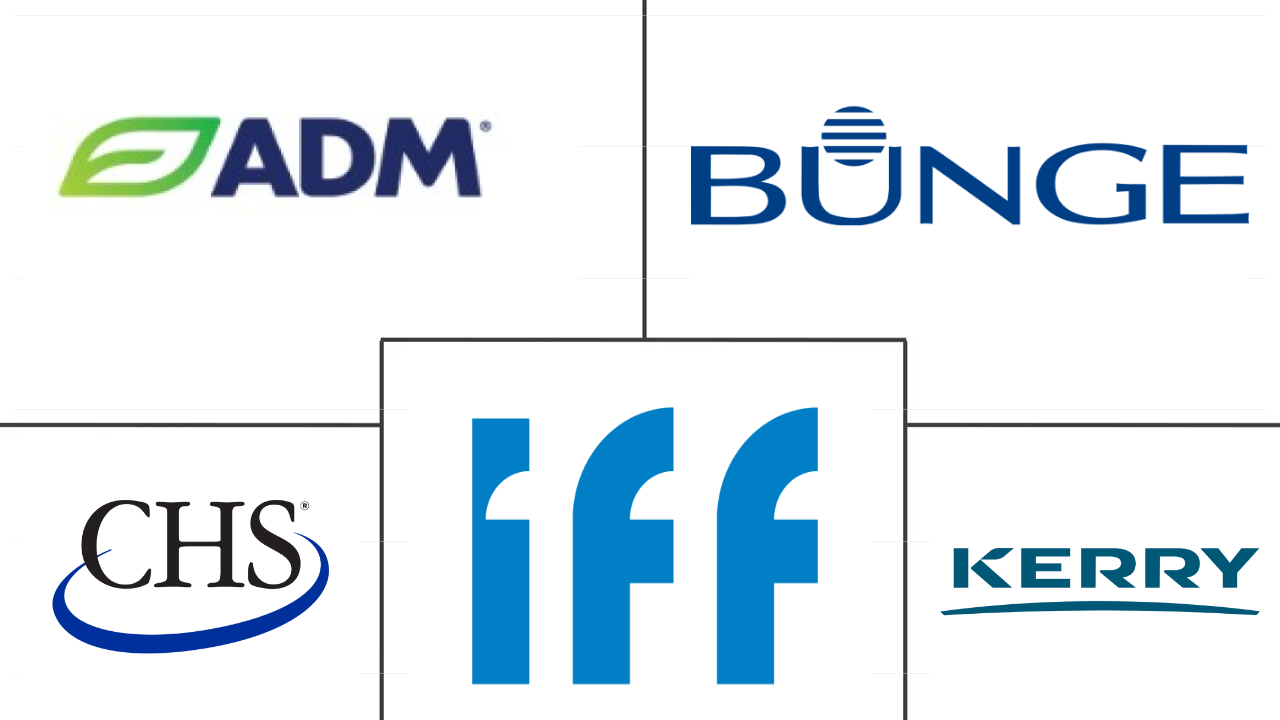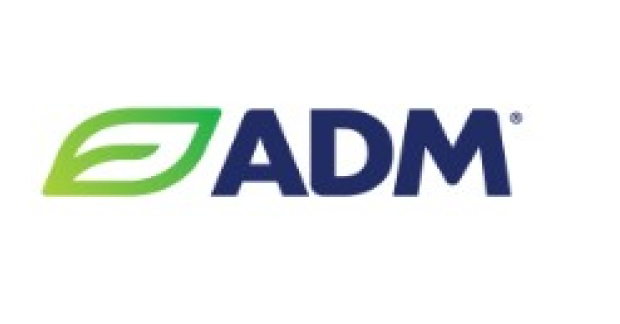Market Size of north america protein Industry
| Icons | Lable | Value |
|---|---|---|
|
|
Study Period | 2017 - 2029 |
|
|
Market Size (2024) | USD 7.5 Billion |
|
|
Market Size (2029) | USD 9.23 Billion |
|
|
Largest Share by End User | Food and Beverages |
|
|
CAGR (2024 - 2029) | 4.25 % |
|
|
Largest Share by Country | United States |
|
|
Market Concentration | Low |
Major Players |
||

|
||
|
*Disclaimer: Major Players sorted in no particular order |
North America Protein Market Analysis
The North America Protein Market size is estimated at 7.5 billion USD in 2024, and is expected to reach 9.23 billion USD by 2029, growing at a CAGR of 4.25% during the forecast period (2024-2029).
7.5 Billion
Market Size in 2024 (USD)
9.23 Billion
Market Size in 2029 (USD)
5.50 %
CAGR (2017-2023)
4.25 %
CAGR (2024-2029)
Largest Market by Source
67.27 %
value share, Plant, 2023
Huge availability, functionality, low price of soy, wheat, and pea, and being a vegan protein source have contributed to the leading position of plant proteins in the region.
Largest Market by End User
52.24 %
value share, Food and Beverages, 2023
The F&B segment leads the market, driven by the meat and meat alternative, beverage, and bakery sectors. The rise in functional F&B boosts the demand for protein ingredients.
Fastest Growing Market by Source
6.76 %
Projected CAGR, Microbial, 2024-2029
The demand for microbial proteins, mainly algae protein, is noted from the supplements segment. Constant innovation and new entrants are anticipated to drive this segment.
Fastest Growing Market by End User
6.58 %
Projected CAGR, Personal Care and Cosmetics, 2024-2029
Protein-enriched skin, body, and hair care products' demand is rising. Players offering products with protein ingredients in distinct concentrations are boosting the segment.
Leading Market Player
12.26 %
market share, Archer Daniels Midland Company, 2021

Archer Daniels Midland Company holds the largest share of the market. The company focuses on expanding its consumer base and has collaborated with regional clients.
Food and Beverages sector dominates due to strong demand from dairy & dairy alternatives and supplements
- The F&B sector dominates the end-user market, due to the growing need for whey, wheat, and pea protein in F&B products. Because of the extensive use of soy-based plant protein, the dairy and meat alternatives market continued to hold the leading position. Together, the two sub-segments made up 61.3% of the total volume of the F&B segment in the region in 2022. Since soy can replicate muscle texture when stacked into linear fibers, soy protein leads the protein market. This boosts its use for high-moisture extrusion, gelling, and protein fortification. To produce the requisite anisotropic product structure, these meat analogs are extruded at high moisture contents (>40%) and elevated temperatures above 100 °C.
- Animal feed is the second-largest segment, where insect protein dominates and holds 53.8% of the market volume. The market potential for animal feed is further expanded by the introduction of sustainable alternative protein sources like insect protein. To provide a cost-effective and efficient source of feed-grade protein, companies like Darling Ingredients, Aspire Food Group, and Enterra Corporation are expanding their manufacturing capacities in the region.
- Personal care and cosmetics is the fastest-growing segment, and it is projected to register a CAGR of 6.48% by value during the forecast period. In the United States, 6.8 million people suffer from hair problems such as alopecia areata. Collagen peptides, which are the hydrolyzed form of collagen, nourish the hair bulbs and strengthen the hair follicles by fostering the ideal conditions for healthy hair growth. OGX Biotin & Collagen Shampoo, Salcoll Collagen Hair Mist, Hair La Vie Foundation Collagen Elixir, etc. are a few examples of hair care products containing collagen.
United states holds majority of share in 2022 due to strong presence of various food manufacturing units
- The overall North American protein market witnessed a favorable growth rate of 9.09% in terms of sales value in 2020. The United States led the market in 2020 due to high production consolidation in the country and an active competitive landscape. Companies are strengthening their presence in the country by acquiring small firms, ramping up protein production units, and expanding their product portfolios. Companies such as Agropur, Anchor Ingredients, and Hilmar Cheese boosted their production capabilities over the review period. Thus, constant product developments and differentiation in the market further resulted in additional sales by volume.
- Canada remained the second-largest market in 2022, driven by consumers pushing for diversification of protein sources. Animal proteins are being replaced by new functional foods and value-added products that are being created by the booming plant-protein industry. In 2022, more than 40% of people in Canada actively strive to increase their consumption of plant-based foods. The popularity of plant-based protein sources recently increased due to their suitability for vegetarian, vegan, and "flexitarian" lifestyles.
- Mexico is likely to be the fastest-growing region, with a projected volume CAGR of 6.46% during the forecast period. The Mexican market is dominated by the demand for plant proteins in the country, and it is anticipated to register a CAGR of 6.67%, by value, during the forecast period. Due to the rising awareness among Mexican consumers about food safety, environmental sustainability, and animal welfare aspects of meat, a shift from animal protein products to plant-based protein products was observed among a significant portion of the country.
North America Protein Industry Segmentation
Animal, Microbial, Plant are covered as segments by Source. Animal Feed, Food and Beverages, Personal Care and Cosmetics, Supplements are covered as segments by End User. Canada, Mexico, United States are covered as segments by Country.
- The F&B sector dominates the end-user market, due to the growing need for whey, wheat, and pea protein in F&B products. Because of the extensive use of soy-based plant protein, the dairy and meat alternatives market continued to hold the leading position. Together, the two sub-segments made up 61.3% of the total volume of the F&B segment in the region in 2022. Since soy can replicate muscle texture when stacked into linear fibers, soy protein leads the protein market. This boosts its use for high-moisture extrusion, gelling, and protein fortification. To produce the requisite anisotropic product structure, these meat analogs are extruded at high moisture contents (>40%) and elevated temperatures above 100 °C.
- Animal feed is the second-largest segment, where insect protein dominates and holds 53.8% of the market volume. The market potential for animal feed is further expanded by the introduction of sustainable alternative protein sources like insect protein. To provide a cost-effective and efficient source of feed-grade protein, companies like Darling Ingredients, Aspire Food Group, and Enterra Corporation are expanding their manufacturing capacities in the region.
- Personal care and cosmetics is the fastest-growing segment, and it is projected to register a CAGR of 6.48% by value during the forecast period. In the United States, 6.8 million people suffer from hair problems such as alopecia areata. Collagen peptides, which are the hydrolyzed form of collagen, nourish the hair bulbs and strengthen the hair follicles by fostering the ideal conditions for healthy hair growth. OGX Biotin & Collagen Shampoo, Salcoll Collagen Hair Mist, Hair La Vie Foundation Collagen Elixir, etc. are a few examples of hair care products containing collagen.
| Source | ||||||||||||
| ||||||||||||
| ||||||||||||
|
| End User | |||||||||||||
| Animal Feed | |||||||||||||
| |||||||||||||
| Personal Care and Cosmetics | |||||||||||||
|
| Country | |
| Canada | |
| Mexico | |
| United States | |
| Rest of North America |
North America Protein Market Size Summary
The North America Protein Market is experiencing significant growth, driven by diverse applications across various sectors. The food and beverage industry is a major contributor, with increasing demand for whey, wheat, and pea proteins. Soy-based plant proteins are particularly prominent due to their ability to mimic muscle texture, making them ideal for meat alternatives. The animal feed segment also plays a crucial role, with insect protein leading the market, supported by companies expanding their production capacities to meet the rising demand for sustainable protein sources. Additionally, the personal care and cosmetics sector is emerging as the fastest-growing segment, fueled by the popularity of collagen-based products that promote hair and skin health.
The market landscape in North America is characterized by a fragmented structure, with key players like Archer Daniels Midland Company, Bunge Limited, and Kerry Group PLC holding significant shares. The United States leads the market, benefiting from high production capabilities and a competitive environment, while Canada and Mexico are also witnessing robust growth. The Canadian market is seeing a shift towards plant-based proteins, reflecting consumer preferences for vegetarian and vegan diets. In Mexico, the demand for plant proteins is rising due to increased awareness of environmental and animal welfare issues. Overall, the North America Protein Market is poised for continued expansion, driven by innovation and evolving consumer trends.
North America Protein Market Size - Table of Contents
-
1. MARKET SEGMENTATION (includes market size in Value in USD and Volume, Forecasts up to 2029 and analysis of growth prospects)
-
1.1 Source
-
1.1.1 Animal
-
1.1.1.1 By Protein Type
-
1.1.1.1.1 Casein and Caseinates
-
1.1.1.1.2 Collagen
-
1.1.1.1.3 Egg Protein
-
1.1.1.1.4 Gelatin
-
1.1.1.1.5 Insect Protein
-
1.1.1.1.6 Milk Protein
-
1.1.1.1.7 Whey Protein
-
1.1.1.1.8 Other Animal Protein
-
-
-
1.1.2 Microbial
-
1.1.2.1 By Protein Type
-
1.1.2.1.1 Algae Protein
-
1.1.2.1.2 Mycoprotein
-
-
-
1.1.3 Plant
-
1.1.3.1 By Protein Type
-
1.1.3.1.1 Hemp Protein
-
1.1.3.1.2 Pea Protein
-
1.1.3.1.3 Potato Protein
-
1.1.3.1.4 Rice Protein
-
1.1.3.1.5 Soy Protein
-
1.1.3.1.6 Wheat Protein
-
1.1.3.1.7 Other Plant Protein
-
-
-
-
1.2 End User
-
1.2.1 Animal Feed
-
1.2.2 Food and Beverages
-
1.2.2.1 By Sub End User
-
1.2.2.1.1 Bakery
-
1.2.2.1.2 Beverages
-
1.2.2.1.3 Breakfast Cereals
-
1.2.2.1.4 Condiments/Sauces
-
1.2.2.1.5 Confectionery
-
1.2.2.1.6 Dairy and Dairy Alternative Products
-
1.2.2.1.7 Meat/Poultry/Seafood and Meat Alternative Products
-
1.2.2.1.8 RTE/RTC Food Products
-
1.2.2.1.9 Snacks
-
-
-
1.2.3 Personal Care and Cosmetics
-
1.2.4 Supplements
-
1.2.4.1 By Sub End User
-
1.2.4.1.1 Baby Food and Infant Formula
-
1.2.4.1.2 Elderly Nutrition and Medical Nutrition
-
1.2.4.1.3 Sport/Performance Nutrition
-
-
-
-
1.3 Country
-
1.3.1 Canada
-
1.3.2 Mexico
-
1.3.3 United States
-
1.3.4 Rest of North America
-
-
North America Protein Market Size FAQs
How big is the North America Protein Market?
The North America Protein Market size is expected to reach USD 7.50 billion in 2024 and grow at a CAGR of 4.25% to reach USD 9.23 billion by 2029.
What is the current North America Protein Market size?
In 2024, the North America Protein Market size is expected to reach USD 7.50 billion.

